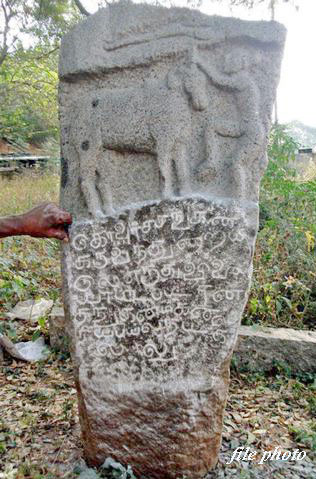Tamilnadu, February 5: A 400-year-old stone inscription with Tamil words which depicts the existence of jallikattu in the past stands as a historical evidence for the sport.
The six-foot-long stone, found at Pethanaickenpalayam in Attur in 1976 and kept in the Salem Government Museum, is part of a sculpture which depicts a tamer trying to snatch the prize from the horn of a bull. The stone has Tamil words engraved on it, which could not have been decoded till now.
However, the Salem Historical Society on Tuesday succeeded in deciphering the words.
Epigraphist and manuscriptologist N. Kumaraswamy has read the inscription, Kovur Kangan Karuvanduraiyilae, Erudhu vilayadi pattan. Kangan Magan Periya Payal natta kallu’and explained it “Kangan of Kovur village took part in the bull-taming sport (jallikattu) held in Karuvandurai (presently Karumandurai) and attained martyrdom. Hence in remembrance of Kangan, his son Periya Payal erected the hero stone.
Mr. Kumaraswamy also read the inscriptions on another stone belonging to the 13th century, kept in the museum. The stone dates back to 1,227 A.D. during the rule of Raja Raja Cholan III. Its inscription says about two brothers, who created a lake between Konganapuram and Tharamangalam at Katchipalli. Pongilan Amandankali and his younger brother, whose name in the inscription was damaged, erected the stone with a request to the people to preserve and maintain the lake which serves agriculture and meets drinking water needs.
The inscription also states, “We will keep the foot of the people on our heads and praise and celebrate them who help to maintain the lake’’.



